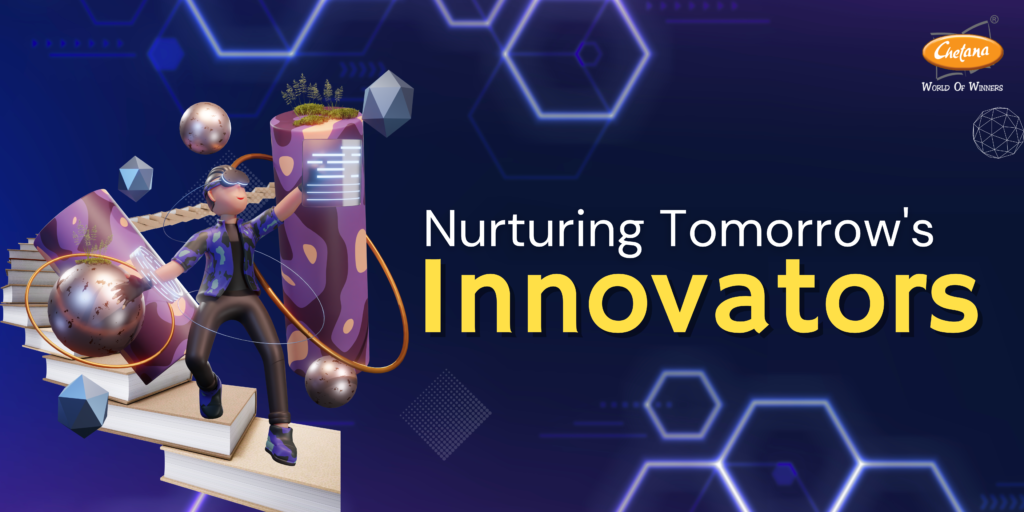In the dynamic landscape of education, where traditional methodologies intersect with modern innovations, the early year’s classroom stands as a beacon of foundational learning. As we navigate the complexities of the Indian education system, it becomes increasingly evident that embracing technology is not merely a choice but a necessity in nurturing the innovators of tomorrow.
The Evolution of Early Years Education in India: India’s rich educational heritage has long emphasized holistic development and experiential learning in the early years. Traditionally, early childhood education in India revolved around Gurukul systems, where young learners imbibed knowledge through immersive experiences guided by gurus. Indian Education has been blessed with gurus like “Shikshan Maharshi” Gijubhai Badheka, Anutai Wagh ,Shankar Gosh, Revathi Shankaran etc who have made significant contributions to early childhood education in India by challenging conventional practices, advocating for child-centered approaches, and fostering a culture of innovation and excellence in teaching and learning. Their legacies continue to inspire educators and shape the future of early education in education.
However, with the dawn of the digital age, the landscape began to shift, prompting a gradual integration of technology into early year’s classrooms.
Benefits of Technology in Early Childhood Education: Research indicates that judicious integration of technology can yield multifaceted benefits in early childhood education. In the Indian context, where diversity is not just a buzzword but a lived reality, technology serves as a powerful equalizer, catering to the varied learning needs and abilities of young learners. Interactive educational apps, multimedia resources, and adaptive learning platforms offer personalized learning experiences, fostering creativity, critical thinking, and problem-solving skills from an early age.
Overcoming Challenges and Concerns: While the potential benefits of technology in early year’s education are undeniable, it’s crucial to address the associated challenges and concerns. In the Indian context, where socioeconomic disparities are prevalent, ensuring equitable access to technology remains a pressing issue. Moreover, concerns regarding excessive screen time and digital distractions necessitate a balanced approach to technology integration. Collaborative efforts between educators, policymakers, and parents are essential in navigating these challenges and harnessing the transformative power of technology responsibly.
Examples of Effective Technology Integration: Across India, numerous initiatives exemplify the effective integration of technology in early childhood education. Effective technology integration in early childhood education requires thoughtful consideration of the developmental needs of young children and the unique opportunities technology offers to support their learning and development.
Some key considerations and strategies for integrating technology effectively in the early years:
-
Choosing age-appropriate digital tools and resources that support learning goals and align with the developmental needs and interests of young children.
-
Prioritizing interactive and hands-on learning experiences that engage young children actively with technology.
-
Integrating technology into play-based learning activities that encourage imagination, collaboration, and social interaction. Using digital medium for storytelling, interactive games, and multimedia tools to extend children’s play experiences and inspire creativity.
-
Providing scaffolded support and guidance to help young children navigate and make meaning of technology tools and resources.
-
Integrating technology across various content areas, including literacy, mathematics, science, and the arts.
-
Sensitizing parents/caregivers in maintaining a balanced approach to screen time by incorporating a variety of learning activities both with and without technology. Ensuring that technology use is integrated purposefully and complemented by hands-on, real-world experiences.
Empowering Educators and Parents: In the quest to harness technology for optimal learning outcomes, the role of educators and parents cannot be overstated. Educators play a pivotal role as facilitators, guiding children through purposeful interactions with technology and integrating digital tools seamlessly into existing curricula. Equally important is the role of parents as co-partners in their child’s educational journey. Empowering parents with resources and guidance on responsible technology use fosters a collaborative ecosystem wherein children thrive both in and out of the classroom.
Role of technology in future: As we gaze into the future of early childhood education in India, the role of technology looms larger than ever. Emerging trends such as immersive learning experiences, augmented reality, and artificial intelligence hold the promise of revolutionizing the way we engage young learners. However, to realize this transformative potential, concerted efforts must be made to address infrastructural barriers, enhance digital literacy among stakeholders, and ensure that technology remains a catalyst for inclusive and equitable education for all.
In the tapestry of early childhood education, technology emerges not as a disruptor but as an enabler, enriching learning experiences and nurturing the potential of every child. As we navigate the complexities of the Indian education system, let us embrace innovation with a steadfast commitment to fostering creativity, curiosity, and compassion in the young minds that will shape the future of our nation.

